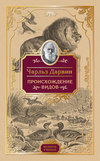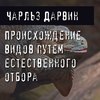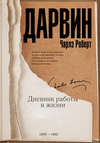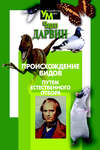Читать книгу: «More Letters of Charles Darwin — Volume 1», страница 34
One of the more curious points in Maury is, as it strikes me, in the little change which about 9,000 feet of sudden elevation would make in the continent visible, and what a prodigious change 9,000 feet subsidence would make! Is the difference due to denudation during elevation? Certainly 12,000 feet elevation would make a prodigious change. I have just been quoting you in my essay on ice carrying seeds in the southern hemisphere, but this will not do in all the cases. I have had a week of such hard labour in getting up the relations of all the Antarctic flora from Hooker's admirable works. Oddly enough, I have just finished in great detail, giving evidence of coolness in tropical regions during the Glacial epoch, and the consequent migration of organisms through the tropics. There are a good many difficulties, but upon the whole it explains much. This has been a favourite notion with me, almost since I wrote on erratic boulders of the south. It harmonises with the modification of species; and without admitting this awful postulate, the Glacial epoch in the south and tropics does not work in well. About Atlantis, I doubt whether the Canary Islands are as much more related to the continent as they ought to be, if formerly connected by continuous land.
Hooker, with whom I have formerly discussed the notion of the world or great belts of it having been cooler, though he at first saw great difficulties (and difficulties there are great enough), I think is much inclined to adopt the idea. With modification of specific forms it explains some wondrous odd facts in distribution.
But I shall never stop if I get on this subject, on which I have been at work, sometimes in triumph, sometimes in despair, for the last month.
LETTER 328. ASA GRAY TO CHARLES DARWIN. Received August 20th, 1856.
I enclose you a proof of the last page, that you may see what our flora amounts to. The genera of the Cryptogams (Ferns down to Hepaticae) are illustrated in fourteen crowded plates. So that the volume has become rather formidable as a class-book, which it is intended for.
I have revised the last proofs to-day. The publishers will bring it out some time in August. Meanwhile, I am going to have a little holiday, which I have earned, little as I can spare the time for it. And my wife and I start on Friday to visit my mother and friends in West New York, and on our way back I will look in upon the scientific meeting at Albany on the 20th inst., or later, just to meet some old friends there.
Why could not you come over, on the urgent invitation given to European savans — and free passage provided back and forth in the steamers? Yet I believe nobody is coming. Will you not come next year, if a special invitation is sent you on the same terms?
Boott lately sent me your photograph, which (though not a very perfect one) I am well pleased to have...
But there is another question in your last letter — one about which a person can only give an impression — and my impression is that, speaking of plants of a well-known flora, what we call intermediate varieties are generally less numerous in individuals than the two states which they connect. That this would be the case in a flora where things are put as they naturally should be, I do not much doubt; and the wider are your views about species (say, for instance, with Dr. Hooker's very latitudinarian notions) the more plainly would this appear. But practically two things stand hugely in the way of any application of the fact or principle, if such it be. 1. Our choice of what to take as the typical forms very often is not free. We take, e.g., for one of them the particular form of which Linnaeus, say, happened to have a specimen sent him, and on which {he} established the species; and I know more than one case in which that is a rare form of a common species; the other variety will perhaps be the opposite extreme — whether the most common or not, or will be what L. or {illegible} described as a 2nd species. Here various intermediate forms may be the most abundant. 2. It is just the same thing now, in respect to specimens coming in from our new western country. The form which first comes, and is described and named, determines the specific character, and this long sticks as the type, though in fact it may be far from the most common form. Yet of plants very well known in all their aspects, I can think of several of which we recognise two leading forms, and rarely see anything really intermediate, such as our Mentha borealis, its hairy and its smooth varieties.
Your former query about the variability of naturalised plants as compared with others of same genera, I had not forgotten, but have taken no steps to answer. I was going hereafter to take up our list of naturalised plants and consider them — it did not fall into my plan to do it yet. Off-hand I can only say that it does not strike me that our introduced plants generally are more variable, nor as variable, perhaps, as the indigenous. But this is a mere guess. When you get my sheets of first part of article in "Silliman's Journal," remember that I shall be most glad of free critical comments; and the earlier I get them the greater use they will be to me...
One more favour. Do not, I pray you, speak of your letters troubling me. I should be sorry indeed to have you stop, or write more rarely, even though mortified to find that I can so seldom give you the information you might reasonably expect.
LETTER 329. TO ASA GRAY. Down, August 24th {1856}.
I am much obliged for your letter, which has been very interesting to me. Your "indefinite" answers are perhaps not the least valuable part; for Botany has been followed in so much more a philosophical spirit than Zoology, that I scarcely ever like to trust any general remark in Zoology without I find that botanists concur. Thus, with respect to intermediate varieties being rare, I found it put, as I suspected, much too strongly (without the limitations and doubts which you point out) by a very good naturalist, Mr. Wollaston, in regard to insects; and if it could be established as true it would, I think, be a curious point. Your answer in regard to the introduced plants not being particularly variable, agrees with an answer which Mr. H.C. Watson has sent me in regard to British agrarian plants, or such (whether or no naturalised) {as} are now found only in cultivated land. It seems to me very odd, without any theoretical notions of any kind, that such plants should not be variable; but the evidence seems against it.
Very sincere thanks for your kind invitation to the United States: in truth there is nothing which I should enjoy more; but my health is not, and will, I suppose, never be strong enough, except for the quietest routine life in the country. I shall be particularly glad of the sheets of your paper on geographical distribution; but it really is unlikely in the highest degree that I could make any suggestions.
With respect to my remark that I supposed that there were but few plants common to Europe and the United States, not ranging to the Arctic regions; it was founded on vague grounds, and partly on range of animals. But I took H.C. Watson's remarks (1835) and in the table at the end I found that out of 499 plants believed to be common to the Old and New World, only 110 did not range on either side of the Atlantic up to the Arctic region. And on writing to Mr. Watson to ask whether he knew of any plants not ranging northward of Britain (say 55 deg) which were in common, he writes to me that he imagines there are very few; with Mr. Syme's assistance he found some 20 to 25 species thus circumstanced, but many of them, from one cause or other, he considered doubtful. As examples, he specifies to me, with doubt, Chrysosplenium oppositifolium; Isnardia palustris; Astragalus hypoglottis; Thlaspi alpestre; Arenaria verna; Lythrum hyssopifolium.
I hope that you will be inclined to work out for your next paper, what number, of your 321 in common, do not range to Arctic regions. Such plants seem exposed to such much greater difficulties in diffusion. Very many thanks for all your kindness and answers to my questions.
P.S. — If anything should occur to you on variability of naturalised or agrarian plants, I hope that you will be so kind as to let me hear, as it is a point which interests me greatly.
LETTER 330. ASA GRAY TO CHARLES DARWIN. Cambridge, Mass., September 23rd, 1856.
Dr. Engelmann, of St. Louis, Missouri, who knew European botany well before he came here, and has been an acute observer generally for twenty years or more in this country, in reply to your question I put to him, promptly said introduced plants are not particularly variable — are not so variable as the indigenous plants generally, perhaps.
The difficulty of answering your questions, as to whether there are any plants social here which are not so in the Old World, is that I know so little about European plants in nature. The following is all I have to contribute. Lately, I took Engelmann and Agassiz on a botanical excursion over half a dozen miles of one of our seaboard counties; when they both remarked that they never saw in Europe altogether half so much barberry as in that trip. Through all this district B. vulgaris may be said to have become a truly social plant in neglected fields and copses, and even penetrating into rather close old woods. I always supposed that birds diffused the seeds. But I am not clear that many of them touch the berries. At least, these hang on the bushes over winter in the greatest abundance. Perhaps the barberry belongs to a warmer country than north of Europe, and finds itself more at home in our sunny summers. Yet out of New England it seems not to spread at all.
Maruta Cotula, fide Engelmann, is a scattered and rather scarce plant in Germany. Here, from Boston to St. Louis, it covers the roadsides, and is one of our most social plants. But this plant is doubtless a native of a hotter country than North Germany.
St. John's-wort (Hypericum perforatum) is an intrusive weed in all hilly pastures, etc., and may fairly be called a social plant. In Germany it is not so found, fide Engelmann.
Verbascum Thapsus is diffused over all the country, is vastly more common here than in Germany, fide Engelmann.
I suppose Erodium cicutarium was brought to America with cattle from Spain: it seems to be widely spread over South America out of the Tropics. In Atlantic U.S. it is very scarce and local. But it fills California and the interior of Oregon quite back to the west slope of the Rocky Mountains. Fremont mentions it as the first spring food for his cattle when he reached the western side of the Rocky Mountains. And hardly anybody will believe me when I declare it an introduced plant. I daresay it is equally abundant in Spain. I doubt if it is more so.
Engelmann and I have been noting the species truly indigenous here which, becoming ruderal or campestral, are increasing in the number of individuals instead of diminishing as the country becomes more settled and forests removed. The list of our wild plants which have become true weeds is larger than I had supposed, and these have probably all of them increased their geographical range — at least, have multiplied in numbers in the Northern States since settlements.
Some time ago I sent a copy of the first part of my little essay on the statistics (330/1. "Statistics of the Flora of the Northern U.S." ("Silliman's Journal," XXII. and XXIII.)) of our Northern States plants to Trubner & Co., 12, Paternoster Row, to be thence posted to you. It may have been delayed or failed, so I post another from here.
This is only a beginning. Range of species in latitude must next be tabulated — disjoined species catalogued (i.e. those occurring in remote and entirely separated areas — e.g. Phryma, Monotropa uniflora, etc.) — then some of the curious questions you have suggested — the degree of consanguinity between the related species of our country and other countries, and the comparative range of species in large and small genera, etc., etc. Now, is it worth while to go on at this length of detail? There is no knowing how much space it may cover. Yet, after all, facts in all their fullness is what is wanted, and those not gathered to support (or even to test) any foregone conclusions. It will be prosy, but it may be useful.
Then I have no time properly to revise MSS. and correct oversights. To my vexation, in my short list of our alpine species I have left out, in some unaccountable manner, two of the most characteristic — viz., Cassiope hypnoides and Loiseleuria procumbens. Please add them on page 28.
There is much to be said about our introduced plants. But now, and for some time to come, I must be thinking of quite different matters. I mean to continue this essay in the January number — for which my MSS. must be ready about the 1st of November.
I have not yet attempted to count them up; but of course I am prepared to believe that fully three-fourths of our species common to Europe will {be} found to range northward to the Arctic regions. I merely meant that I had in mind a number that do not; I think the number will not be very small; and I thought you were under the impression that very few absolutely did not so extend northwards. The most striking case I know is that of Convallaria majalis, in the mountains {of} Virginia and North Carolina, and not northward. I believe I mentioned this to you before.
LETTER 331. TO ASA GRAY. Down, October 12th {1856}.
I received yesterday your most kind letter of the 23rd and your "Statistics," and two days previously another copy. I thank you cordially for them. Botanists write, of course, for botanists; but, as far as the opinion of an "outsider" goes, I think your paper admirable. I have read carefully a good many papers and works on geographical distribution, and I know of only one essay (viz. Hooker's "New Zealand") that makes any approach to the clearness with which your paper makes a non-botanist appreciate the character of the flora of a country. It is wonderfully condensed (what labour it must have required!). You ask whether such details are worth giving: in my opinion, there is literally not one word too much.
I thank you sincerely for the information about "social" and "varying plants," and likewise for giving me some idea about the proportion (i.e. 1/4th) of European plants which you think do not range to the extreme North. This proportion is very much greater than I had anticipated, from what I picked up in conversation, etc.
To return to your "Statistics." I daresay you will give how many genera (and orders) your 260 introduced plants belong to. I see they include 113 genera non-indigenous. As you have probably a list of the introduced plants, would it be asking too great a favour to send me, per Hooker or otherwise, just the total number of genera and orders to which the introduced plants belong. I am much interested in this, and have found De Candolle's remarks on this subject very instructive.
Nothing has surprised me more than the greater generic and specific affinity with East Asia than with West America. Can you tell me (and I will promise to inflict no other question) whether climate explains this greater affinity? or is it one of the many utterly inexplicable problems in botanical geography? Is East Asia nearly as well known as West America? so that does the state of knowledge allow a pretty fair comparison? I presume it would be impossible, but I think it would make in one point your tables of generic ranges more clear (admirably clear as they seem to me) if you could show, even roughly, what proportion of the genera in common to Europe (i.e. nearly half) are very general or mundane rangers. As your results now stand, at the first glance the affinity seems so very strong to Europe, owing, as I presume, to nearly half of the genera including very many genera common to the world or large portions of it. Europe is thus unfairly exalted. Is this not so? If we had the number of genera strictly, or nearly strictly European, one could compare better with Asia and Southern America, etc. But I dare say this is a Utopian wish, owing to difficulty of saying what genera to call mundane; nor have I my ideas at all clear on the subject, and I have expressed them even less clearly than I have them.
I am so very glad that you intend to work out the north range of the 321 European species; for it seems to me the by far most important element in their distribution.
And I am equally glad that you intend to work out range of species in regard to size of genera — i.e. number of species in genus. I have been attempting to do this in a very few cases, but it is folly for any one but a botanist to attempt it. I must think that De Candolle has fallen into error in attempting to do this for orders instead of for genera — for reasons with which I will not trouble you.
LETTER 332. TO J.D. HOOKER.
(332/1. The "verdict" referred to in the following letter was Sir J.D. Hooker's opinion on Darwin's MS. on geographical distribution. The first paragraph has been already published in "Life and Letters," II., page 86.)
Down, November 4th {1856}.
I thank you more cordially than you will think probable for your note. Your verdict has been a great relief. On my honour I had no idea whether or not you would say it was (and I knew you would say it very kindly) so bad, that you would have begged me to have burnt the whole. To my own mind my MS. relieved me of some few difficulties, and the difficulties seemed to me pretty fairly stated; but I had become so bewildered with conflicting facts — evidence, reasoning and opinions — that I felt to myself that I had lost all judgment. Your general verdict is incomparably more favourable than I had anticipated.
Very many thanks for your invitation. I had made up my mind, on my poor wife's account, not to come up to next Phil. Club; but I am so much tempted by your invitation, and my poor dear wife is so good-natured about it, that I think I shall not resist — i.e., if she does not get worse. I would come to dinner at about same time as before, if that would suit you, and I do not hear to the contrary; and would go away by the early train — i.e., about 9 o'clock. I find my present work tries me a good deal, and sets my heart palpitating, so I must be careful. But I should so much like to see Henslow, and likewise meet Lindley if the fates will permit. You will see whether there will be time for any criticism in detail on my MS. before dinner: not that I am in the least hurry, for it will be months before I come again to Geographical Distribution; only I am afraid of your forgetting any remarks.
I do not know whether my very trifling observations on means of distribution are worth your reading, but it amuses me to tell them.
The seeds which the eagle had in {its} stomach for eighteen hours looked so fresh that I would have bet five to one that they would all have grown; but some kinds were ALL killed, and two oats, one canary-seed, one clover, and one beet alone came up! Now I should have not cared swearing that the beet would not have been killed, and I should have fully expected that the clover would have been. These seeds, however, were kept for three days in moist pellets, damp with gastric juice, after being ejected, which would have helped to have injured them.
Lately I have been looking, during a few walks, at excrement of small birds. I have found six kinds of seeds, which is more than I expected. Lastly, I have had a partridge with twenty-two grains of dry earth on one foot, and to my surprise a pebble as big as a tare seed; and I now understand how this is possible, for the bird scratches itself, {and the} little plumous feathers make a sort of very tenacious plaister. Think of the millions of migratory quails (332/2. See "Origin," Edition I., page 363, where the millions of migrating quails occur again.), and it would be strange if some plants have not been transported across good arms of the sea.
Talking of this, I have just read your curious Raoul Island paper. (332/3. "Linn. Soc. Journal." I., 1857.) This looks more like a case of continuous land, or perhaps of several intervening, now lost, islands than any (according to my heterodox notions) I have yet seen. The concordance of the vegetation seems so complete with New Zealand, and with that land alone.
I have read Salter's paper and can hardly stomach it. I wonder whether the lighters were ever used to carry grain and hay to ships. (332/4. Salter, "Linn. Soc. Journal," I., 1857, page 140, "On the Vitality of Seeds after prolonged Immersion in the Sea." It appears that in 1843 the mud was scraped from the bottom of the channels in Poole Harbour, and carried to shore in barges. On this mud a vegetation differing from that of the surrounding shore sprang up.)
Adios, my dear Hooker. I thank you most honestly for your assistance — assistance, by the way, now spread over some dozen years.
P.S. — Wednesday. I see from my wife's expression that she does not really much like my going, and therefore I must give up, of course, this pleasure.
If you should have anything to discuss about my MS., I see that I could get to you by about 12, and then could return by the 2.19 o'clock train, and be home by 5.30 o'clock, and thus I should get two hours' talk. But it would be a considerable exertion for me, and I would not undertake it for mere pleasure's sake, but would very gladly for my book's sake.
LETTER 333. J.D. HOOKER TO CHARLES DARWIN. November 9th, 1856.
I have finished the reading of your MS., and have been very much delighted and instructed. Your case is a most strong one, and gives me a much higher idea of change than I had previously entertained; and though, as you know, never very stubborn about unalterability of specific type, I never felt so shaky about species before.
The first half you will be able to put more clearly when you polish up. I have in several cases made pencil alterations in details as to words, etc., to enable myself to follow better, — some of it is rather stiff reading. I have a page or two of notes for discussion, many of which were answered, as I got further on with the MS., more or less fully. Your doctrine of the cooling of the Tropics is a startling one, when carried to the length of supporting plants of cold temperate regions; and I must confess that, much as I should like it, I can hardly stomach keeping the tropical genera alive in so very cool a greenhouse {pencil note by C.D., "Not so very cool, but northern ones could range further south if not opposed"}. Still I must confess that all your arguments pro may be much stronger put than you have. I am more reconciled to iceberg transport than I was, the more especially as I will give you any length of time to keep vitality in ice, and more than that, will let you transport roots that way also.
(333/1. The above letter was pinned to the following note by Mr. Darwin.)
In answer to this show from similarity of American, and European and Alpine-Arctic plants, that they have travelled enormously without any change.
As sub-arctic, temperate and tropical are all slowly marching toward the equator, the tropical will be first checked and distressed, similarly (333/2. Almost illegible.) the temperate will invade...; after the temperate can {not} advance or do not wish to advance further the arctics will be checked and will invade. The temperates will have been far longer in Tropics than sub-arctics. The sub-arctics will first have to cross temperate {zone} and then Tropics. They would penetrate among strangers, just like the many naturalised plants brought by man, from some unknown advantage. But more, for nearly all have chance of doing so.
(333/3. The point of view is more clearly given in the following letters.)
LETTER 334. TO J.D. HOOKER. Down, November 15th {1856}.
I shall not consider all your notes on my MS. for some weeks, till I have done with crossing; but I have not been able to stop myself meditating on your powerful objection to the mundane cold period (334/1. See Letter 49.), viz. that MANY-fold more of the warm-temperate species ought to have crossed the Tropics than of the sub-arctic forms. I really think that to those who deny the modification of species this would absolutely disprove my theory. But according to the notions which I am testing — viz. that species do become changed, and that time is a most important element (which I think I shall be able to show very clearly in this case) — in such change, I think, the result would be as follows. Some of the warm-temperate forms would penetrate the Tropics long before the sub-arctic, and some might get across the equator long before the sub-arctic forms could do so (i.e. always supposing that the cold came on slowly), and therefore these must have been exposed to new associates and new conditions much longer than the sub-arctic. Hence I should infer that we ought to have in the warm-temperate S. hemisphere more representative or modified forms, and fewer identical species than in comparing the colder regions of the N. and S. I have expressed this very obscurely, but you will understand, I think, what I mean. It is a parallel case (but with a greater difference) to the species of the mountains of S. Europe compared with the arctic plants, the S. European alpine species having been isolated for a longer period than on the arctic islands. Whether there are many tolerably close species in the warm-temperate lands of the S. and N. I know not; as in La Plata, Cape of Good Hope, and S. Australia compared to the North, I know not. I presume it would be very difficult to test this, but perhaps you will keep it a little before your mind, for your argument strikes me as by far the most serious difficulty which has occurred to me. All your criticisms and approvals are in simple truth invaluable to me. I fancy I am right in speaking in this note of the species in common to N. and S. as being rather sub-arctic than arctic.
This letter does not require any answer. I have written it to ease myself, and to get you just to bear your argument, under the modification point of view, in mind. I have had this morning a most cruel stab in the side on my notion of the distribution of mammals in relation to soundings.
LETTER 335. J.D. HOOKER TO CHARLES DARWIN. Kew, Sunday {November 1856}.
I write only to say that I entirely appreciate your answer to my objection on the score of the comparative rareness of Northern warm-temperate forms in the Southern hemisphere. You certainly have wriggled out of it by getting them more time to change, but as you must admit that the distance traversed is not so great as the arctics have to travel, and the extremes of modifying cause not so great as the arctics undergo, the result should be considerably modified thereby. Thus: the sub-arctics have (1) to travel twice as far, (2) taking twice the time, (3) undergoing many more disturbing influences.
All this you have to meet by giving the North temperate forms simply more time. I think this will hardly hold water.
LETTER 336. TO J.D. HOOKER. Down, November 18th {1856}.
Many thanks for your note received this morning; and now for another "wriggle." According to my notions, the sub-arctic species would advance in a body, advancing so as to keep climate nearly the same; and as long as they did this I do not believe there would be any tendency to change, but only when the few got amongst foreign associates. When the tropical species retreated as far as they could to the equator they would halt, and then the confusion would spread back in the line of march from the far north, and the strongest would struggle forward, etc., etc. (But I am getting quite poetical in my wriggles). In short, I THINK the warm-temperates would be exposed very much longer to those causes which I believe are alone efficient in producing change than the sub-arctic; but I must think more over this, and have a good wriggle. I cannot quite agree with your proposition that because the sub-arctic have to travel twice as far they would be more liable to change. Look at the two journeys which the arctics have had from N. to S. and S. to N., with no change, as may be inferred, if my doctrine is correct, from similarity of arctic species in America and Europe and in the Alps. But I will not weary you; but I really and truly think your last objection is not so strong as it looks at first. You never make an objection without doing me much good. Hurrah! a seed has just germinated after 21 1/2 hours in owl's stomach. This, according to ornithologists' calculation, would carry it God knows how many miles; but I think an owl really might go in storm in this time 400 or 500 miles. Adios.
Owls and hawks have often been seen in mid-Atlantic.
(336/1. An interesting letter, dated November 23rd, 1856, occurs in the "Life and Letters," II., page 86, which forms part of this discussion. On page 87 the following passage occurs: "I shall have to discuss and think more about your difficulty of the temperate and sub-arctic forms in the S. hemisphere than I have yet done. But I am inclined to think that I am right (if my general principles are right), that there would be little tendency to the formation of a new species during the period of migration, whether shorter or longer, though considerable variability may have supervened.)
Покупайте книги и получайте бонусы в Литрес, Читай-городе и Буквоеде.
Участвовать в бонусной программе




















